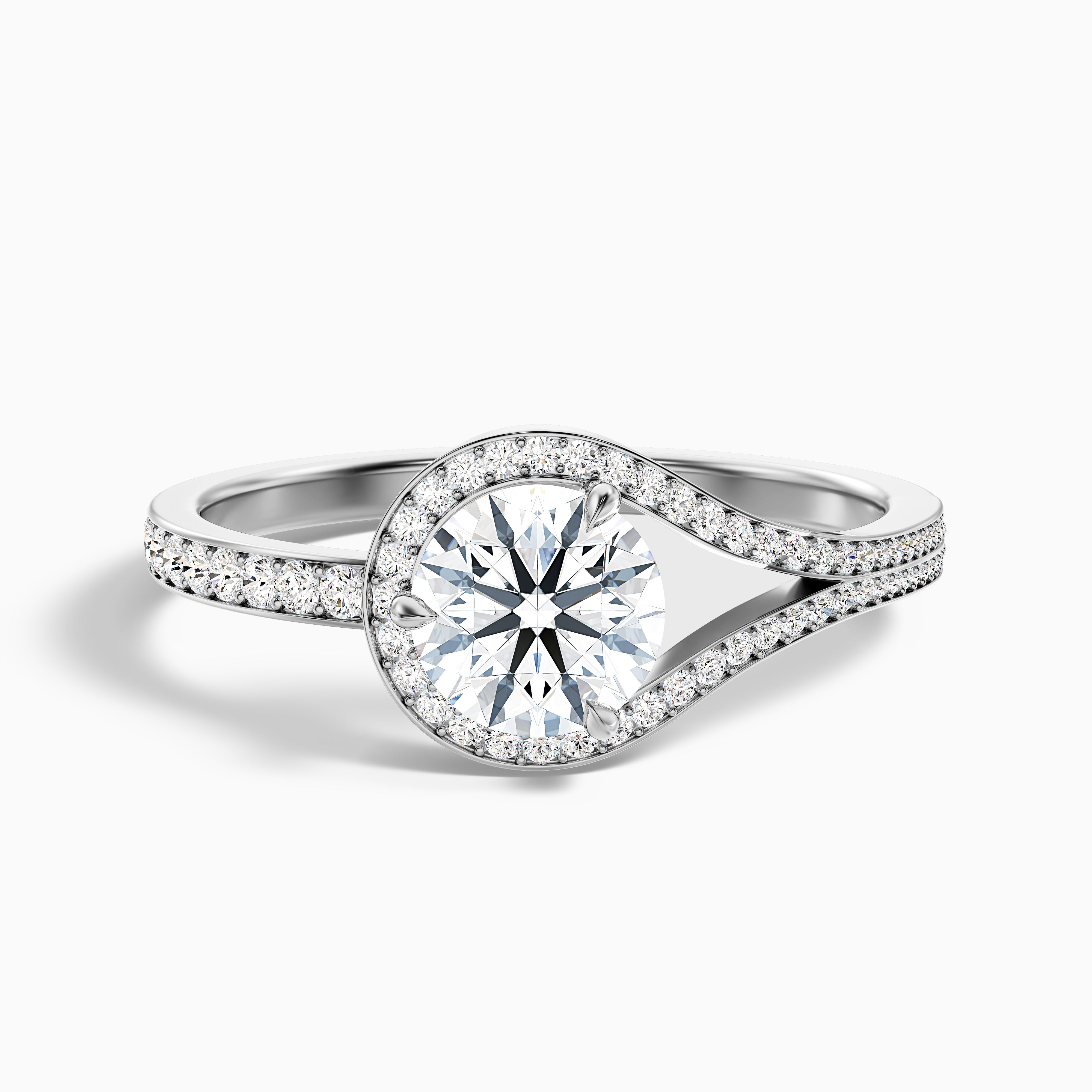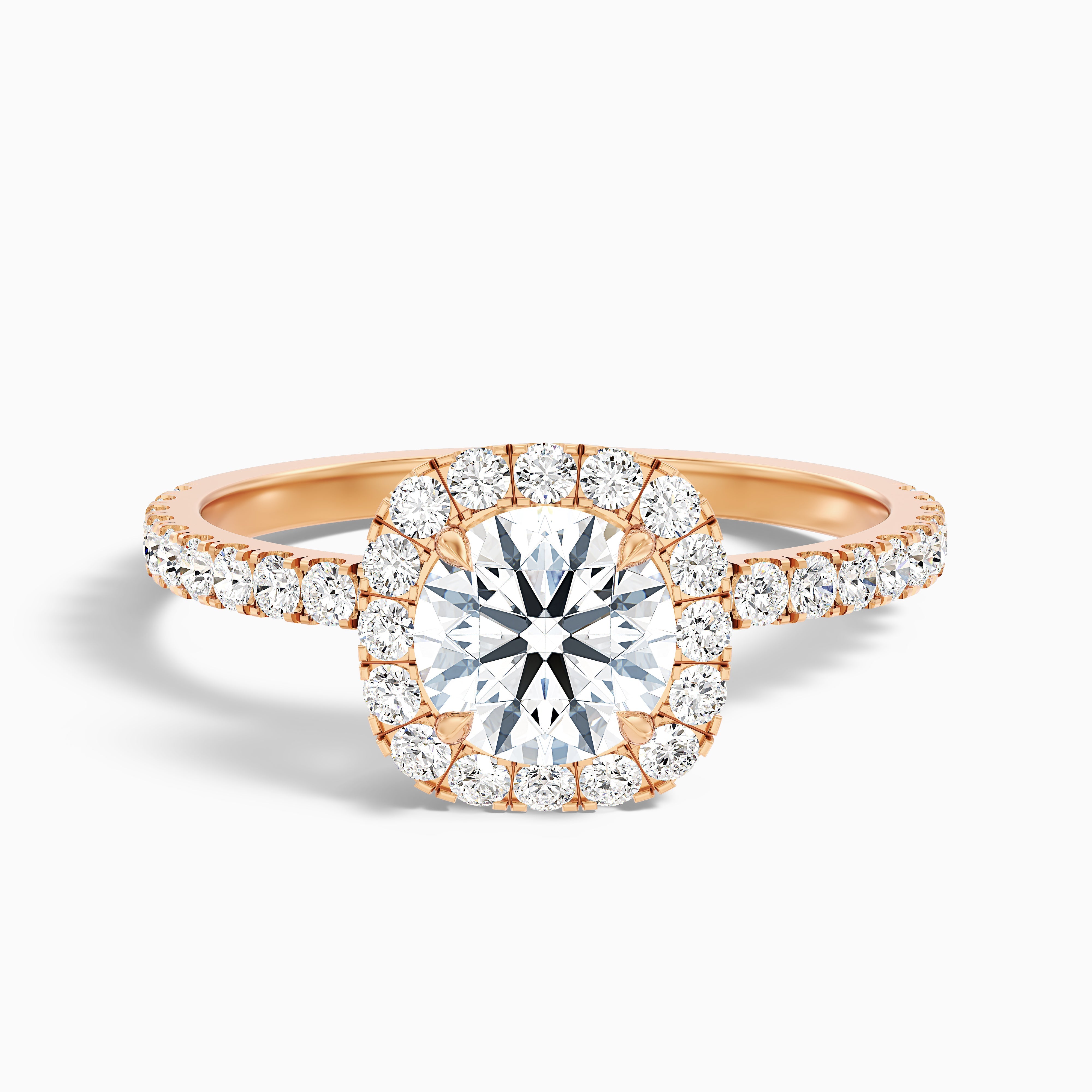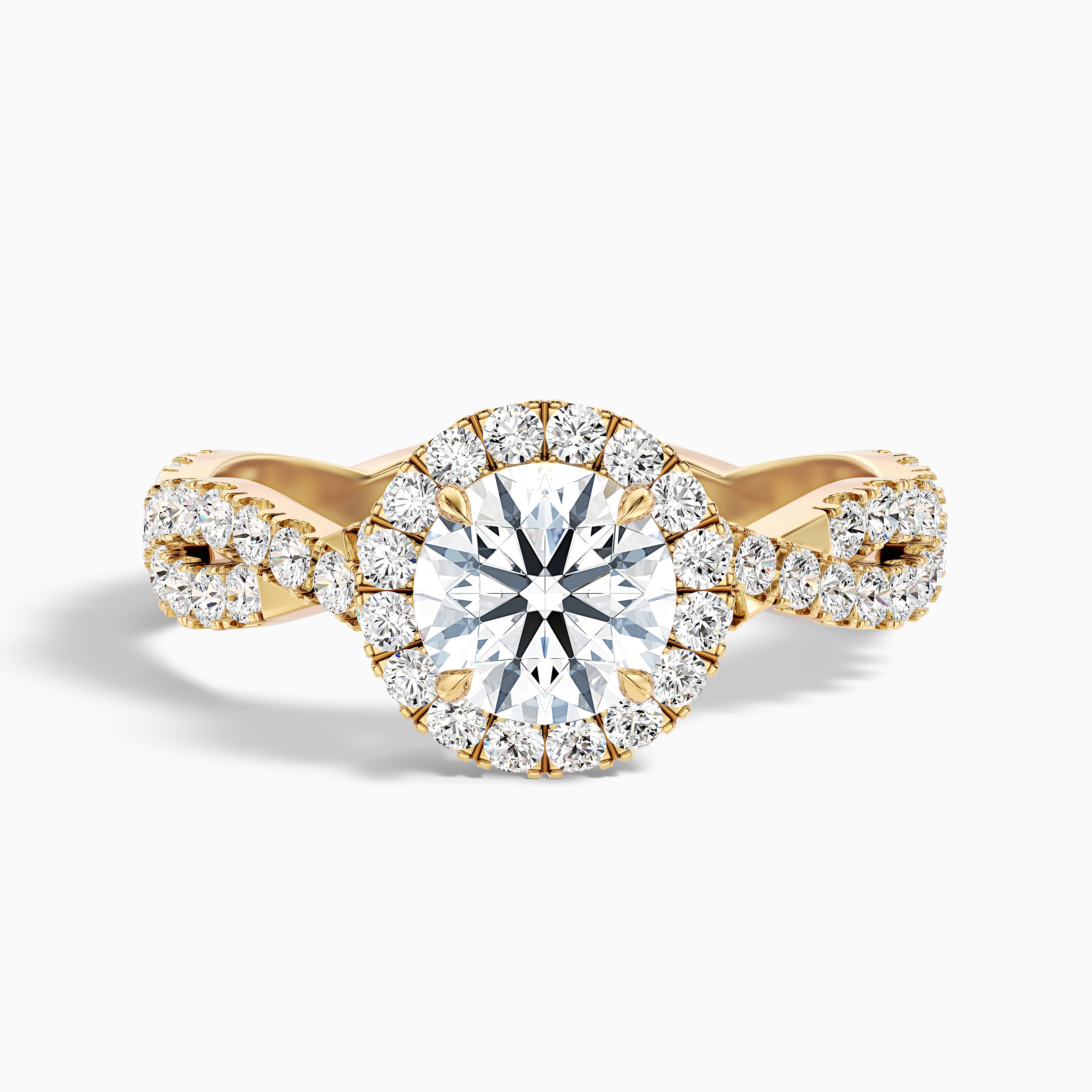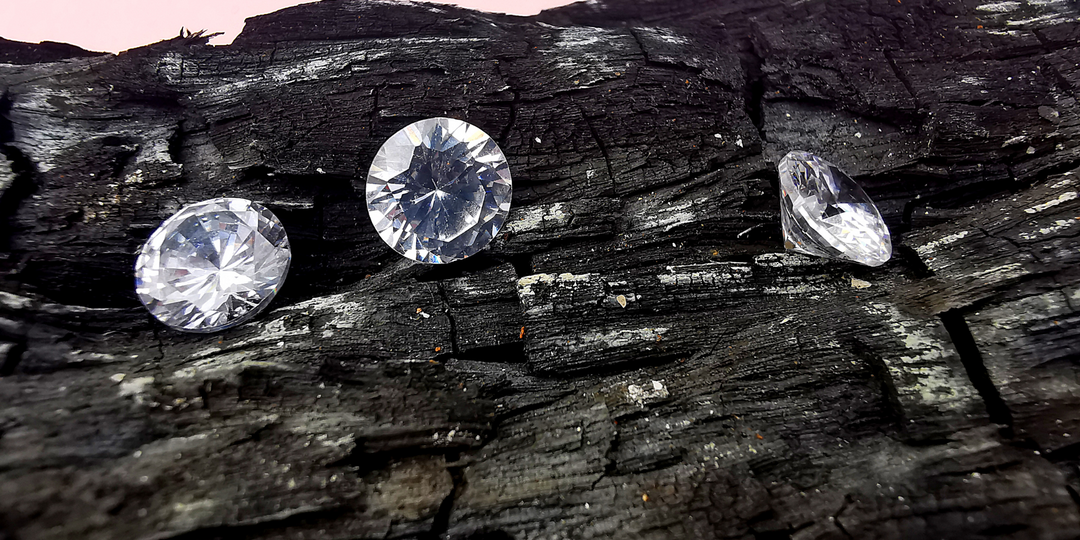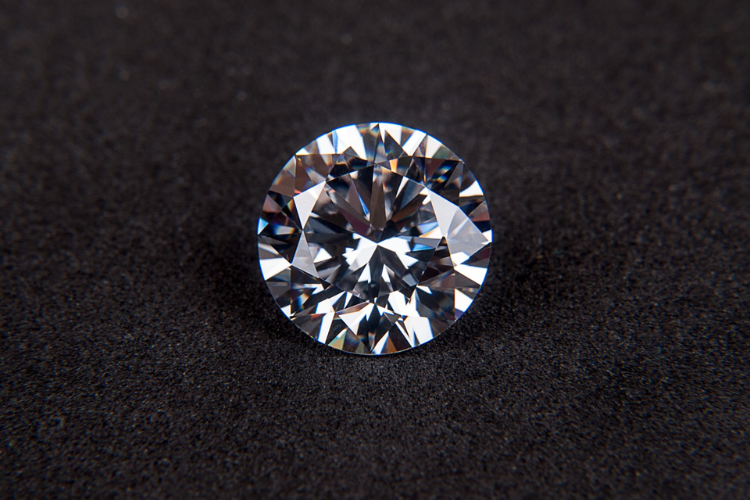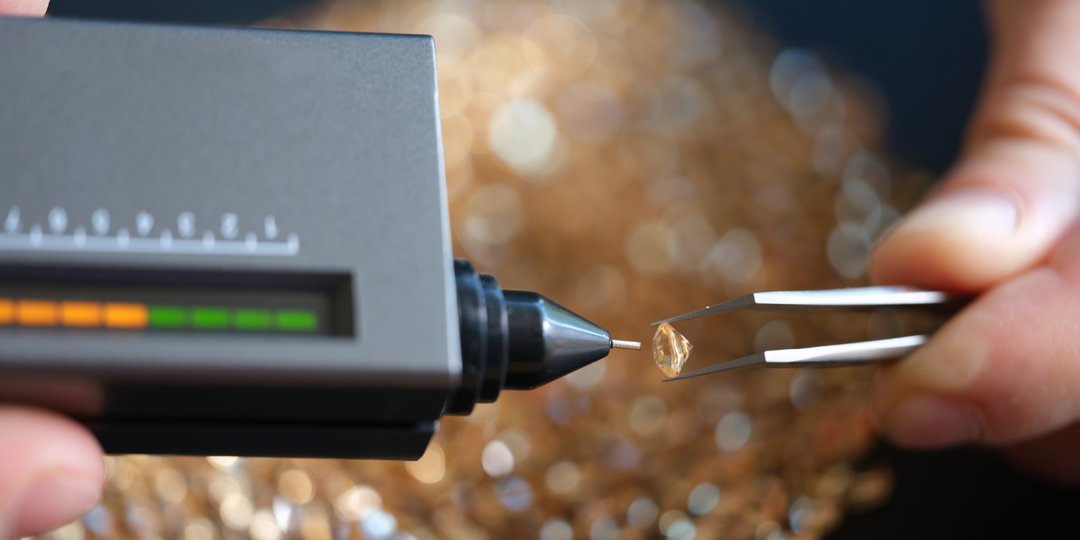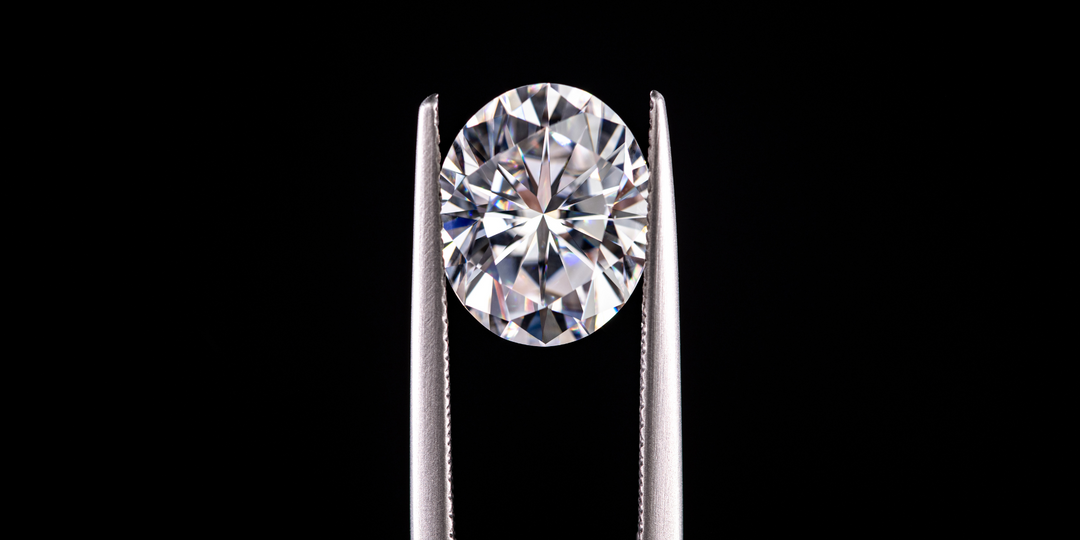Moissanite Vs Diamond: Best Choice for Your Engagement Ring?
Looking for the perfect diamond engagement ring that tells your love story? You might be stuck deciding between two stunning options like moissanite and diamond. Both gemstones have their unique charm and beauty, but how do you pick the right one for you?
In this blog post, we’ll dive into the fascinating world of moissanite and diamonds, breaking down what makes them different to help you make the best choice. Whether you’re eco-conscious, a jewelry lover, or just want the perfect symbol of your love, keep reading to find out everything you need to know about moissanite vs. diamond!
What is Moissanite?
Moissanite is a gemstone made from silicon carbide, a naturally occurring mineral that was first found by French scientist Henri Moissan in 1893 in a meteor crater. Due to its rarity in nature most moissanite diamonds available today are lab created. This gemstone is often compared to diamonds because of its similar look and sparkle, but it has unique properties that set it apart.
One of the best features of moissanite is its fire and brilliance, which refers to the way it reflects light. Moissanite has a higher refractive index than diamonds, meaning it can show more sparkle and rainbow-like flashes of color. This makes it a popular choice for those seeking a beautiful and eye-catching stone for their jewelry.
In terms of durability, moissanite is highly impressive. It ranks 9.25 on the Mohs scale of hardness, making it one of the hardest gemstones available second only to diamonds which score a perfect 10. This hardness ensures that moissanite is resistant to scratching and suitable for everyday wear, making it an excellent option for diamond rings and other jewelry.
Another main advantage of moissanite is its cost-effectiveness. Since it is lab-created, moissanite is generally much less expensive than diamonds of comparable size and quality. This cost-effectiveness allows individuals to choose larger or larger designs without breaking the bank.
Moissanite is also an ethical and eco-friendly choice. The lab grown nature of the stone means it does not involve the environmental and ethical concerns associated with diamond mining. This makes it an attractive option for those who prioritize sustainability and ethical sourcing in their jewelry purchases.
What is a Diamond?
A diamond is a precious gemstone composed of pure carbon known for its hardness and sparkle. Diamonds are formed deep within the earth's mantle under extreme pressure and temperature, diamonds are brought to the surface through volcanic eruptions.
This unique formation process gives diamonds their unique hardness, making them the hardest naturally occurring substance known. Diamonds are typically colorless but can also come in various colors, including yellow, blue, and pink, depending on the presence of trace elements. Their remarkable sparkle and durability make them highly sought after for jewelry, especially engagement rings.
Diamonds are graded based on the “Four Cs”: carat weight, cut, color, and clarity, which determine their value and quality. While natural diamonds have been treasured for centuries, advancements in technology have led to the creation of lab grown diamonds, which offer an ethical and often more affordable alternative.
Key Differences Between Moissanite and Diamond
Appearance: Brilliance, Fire, and How They Reflect Light
Moissanite and diamonds both shine bright, but they do it in their unique ways! Moissanite usually has more "fire," which means you’ll see more colorful flashes of light compared to diamonds. This is because it has a higher refractive index, which measures how much light bends when it enters the stone.
Diamonds, on the other side, are famous for their incredible brilliance—the white light that bounces back to your eye. So, while both stones sparkle beautifully, moissanite can sometimes look even more vibrant, especially if it’s a bigger stone!
Hardness and Durability: Compare Their Ratings on the Mohs Hardness Scale
Did you know that on the Mohs hardness scale, diamonds score a perfect 10? That makes them the hardest natural material out there! This incredible hardness means they resist scratches and hold up well against daily wear and tear.
Moissanite is tough too, with a rating of 9.25. While it’s not quite as hard as diamonds, it’s still tougher than most other gemstones, making it a great option for engagement rings and jewelry you’ll wear regularly.
Price: The Price Difference and Why Moissanite is Generally More Affordable
Moissanite is usually way more affordable than diamonds! The main reason for this price difference is that moissanite is lab-created, while diamonds are often mined, which can be a much more expensive process. Plus, natural diamonds are rare, which also drives up their price.
So, if you're looking for a beautiful gemstone and also do not want to spend too much then moissanite is a fantastic option that gives you all the sparkle and durability without the high price! For instance, a high-quality 1 carat moissanite stone usually retails for about $500, while a 1-carat natural diamond can be priced at approximately $5,500.
Ethical and Environmental Impact: Discuss the Sourcing of Both Gemstones
Diamonds have long been tied to ethical and environmental issues, especially in places where mining can harm workers and the planet. You've probably heard of conflict diamonds, or blood diamonds, which have been a big problem, but efforts like the Kimberley Process aim to tackle this trade.
On the other hand, moissanite is lab-created, so it completely sidesteps those ethical worries. Plus, its production has a much lower environmental impact than diamond mining, making it a great choice for anyone looking to be more eco-friendly!
Here’s a brief table highlighting the key differences between Moissanite and Diamonds:
| Feature | Moissanite | Diamond |
|---|---|---|
| Composition | Silicon carbide (SiC) | Carbon (C) |
| Appearance | More fire (colored flashes), slightly more brilliance | High brilliance (white flashes), classic sparkle |
| Hardness | 9.25 on the Mohs scale | 10 on the Mohs scale |
| Durability | Very durable, suitable for daily wear | Extremely durable, the hardest natural material |
| Brilliance and Fire | Higher fire, more colorful flashes | High brilliance, more white flashes |
| Refractive Index | 2.65 - 2.69 | 2.42 |
| Double Refraction | Yes, can cause a “double vision” effect in larger stones | No, single refraction |
| Origin | Synthetic, created in a lab | Natural (mined) or synthetic (lab grown) |
| Current Price Examples | 1-carat moissanite: approx. $300 - $600 | 1-carat diamond: approx. $2,000 - $12,000 |
Pros and Cons of Choosing Moissanite
Pros of Choosing Moissanite
- Exceptional Brilliance and Fire: Moissanite is famous for its amazing sparkle! It has a higher refractive index than diamonds, which means it reflects more light and creates a stunning display of brilliance and fire. That’s why the Moissanite engagement ring is so eye-catching!
- Affordability: One of the best things about Moissanite is its price! It’s way more affordable than diamonds, which means you can get a bigger and more stunning stone without breaking the bank. It’s a fantastic choice for anyone wanting to get the most bang for their buck without sacrificing style!
- Durability: Moissanite is a very durable gemstone, scoring 9.25 on the Mohs scale of hardness (diamonds score a perfect 10). This makes it suitable for everyday wear, as it is resistant to scratching, chipping, and breaking.
- Ethical and Environmental Considerations: Most Moissanite is lab-created, so it sidesteps the ethical and environmental problems that come with diamond mining. That makes it a guilt-free option for anyone worried about the impact of their jewelry!
- Variety of Colors: Moissanite comes in a lot of colors, including colorless and near-colorless options. This means you can pick the perfect shade for your moissanite ring, whether you’re into a classic vibe or something a bit more unique!
Cons of Choosing Moissanite
- Not a Diamond: One downside to Moissanite is that it’s not a diamond. If you value the tradition and prestige that come with diamonds, Moissanite might not be your top pick. Plus, it doesn’t hold the same resale value as a diamond.
- Different Brilliance: Moissanite is super brilliant, which is great, but it can also be a bit much for some. The way it sparkles can create a colorful, almost rainbow-like effect, and some folks might think that’s too flashy. It comes down to personal taste!
- Perception: Even though Moissanite is beautiful and durable, many people see it as a diamond simulant rather than a gemstone in its own right. This perception could affect how others view your diamond ring choice.
Pros and Cons of Choosing a Diamond
Pros of Choosing a Diamond
- Timeless Beauty: You can't go wrong with diamonds! They have that classic charm and sparkle that just never fades, making them a perfect symbol of love and commitment.
- Durability: Did you know diamonds are the hardest natural material on Earth? They score a perfect 10 on the Mohs scale, so they're super tough and perfect for everyday wear.
- Value Retention: Diamonds usually hold their value pretty well over time. While not every diamond will appreciate, high-quality ones can be a smart investment.
- Variety: One of the best things about diamonds is their variety! They come in all shapes, sizes, and colors, so you can easily find one that matches your style.
- Tradition: Diamonds have been the go-to choice for engagement rings for over a century, which adds a nice touch of history and tradition to your ring!
Cons of Choosing a Diamond
- Cost: Let’s be honest, diamonds can be pricey, often way more than other gemstones. If you’re eyeing a larger, high-quality stone, the price tag can make you think twice.
- Ethical Concerns: There’s also the issue of ethics. The diamond mining industry has a reputation for some serious problems, like conflict diamonds, which are linked to armed conflicts and human rights violations.
- Environmental Impact: Mining for diamonds can seriously harm the environment, causing habitat destruction, water pollution, and increased carbon emissions.
- Resale Value: When it comes to resale, things can get complicated. While some diamonds hold their value, not all of them will sell for a good price, and it can be tough to find a buyer sometimes.
- Alternatives: Nowadays, with lab grown diamonds and other beautiful gems like moissanite, there are plenty of affordable and ethical options out there that look just as stunning!
Which Should You Choose for Your Engagement Ring?
Moissanite is undoubtedly the ideal choice for your engagement ring. because it is way more affordable which means you can get a larger or higher quality stone without spending too much. Another point is moissanite has incredible sparkle and fire so it sparkles even more than a diamond. We can also appreciate the ethical and environmental benefits because it was created in a lab. While diamonds are known for their hardness, moissanite is still durable and perfect for daily wear.
Ultimately, the choice is ours to make. We tend to select what we love because it brings us joy. If you wish to preserve the historical significance of a diamond, opting for a natural diamond is the way to go. On the other hand, if you are an eco-conscious consumer, moissanite may be the better choice for you.
Conclusion
Choosing between moissanite and diamond is a personal decision and depends on things like your budget, values, and style. Both gems have their unique appeal and can beautifully represent your love and commitment.
No matter which one you go for, keep in mind that the real value of an engagement ring comes from the love and meaning behind it. Take your time exploring both options and feel free to ask for advice or chat with a jeweler to help you decide. Here’s to making a choice that shines as brightly as your love!





